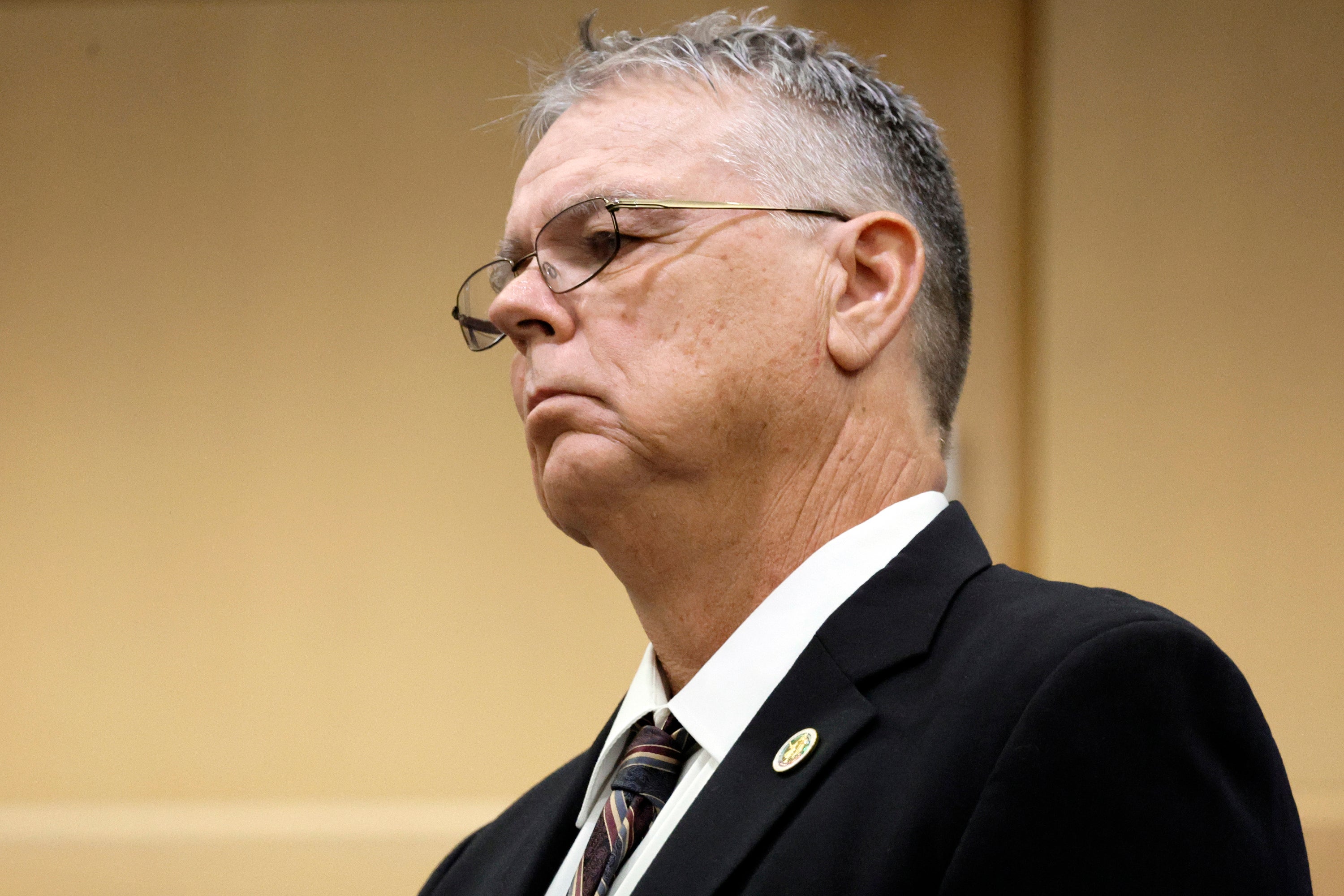Deputy Scot Peterson could have stopped Parkland school shooting but protected himself instead, trial hears
Opening statements are underway in the trial of a former Florida sheriff's deputy charged with failing to stop the Parkland school massacre five years ago

A Florida sheriff’s deputy at the scene of the Parkland school shooting is on trial over whether he failed to take action and prevent the deaths of six of the 17 people killed in the 2018 massacre.
In opening statements Wednesday, a prosecutor told the jury that Scot Peterson, a former Broward County Deputy, took cover instead of charging inside a building to confront shooter Nikolas Cruz as he carried out his six-minute attack.
Mr Peterson, 60, is the first US law enforcement officer ever charged with a crime for an alleged failure to act during a school shooting. If convicted, he could get a prison sentence of nearly a century and lose his $104,000 annual pension. Texas authorities are investigating the officers who didn’t confront the Uvalde gunman who killed 19 elementary students and two teachers last year, but none have been charged.
Mr Peterson had undergone training where he was told that he needs to go toward the gunshots if there's an active shooter, because each bullet fired is potentially another death, Prosecutor Steven Klinger said.
“You’ve got to get in there and you’ve got to find the shooter,” Mr Klinger said.
Mr Peterson’s attorney, Mark Eiglarsh, said the deputy committed no crime and that he didn't know where the gunfire were coming from. Mr Peterson has insisted he would have confronted Cruz but thought the shots came from a sniper, perhaps firing from nearby trees.
“He was not a coward,” Mr Eiglarsh said, and “did everything he possibly could with the limited information had.”
He said Mr Peterson is being made a scapegoat as prosecutors need someone to blame beyond Cruz, who has been sentenced to life in prison.
To gain a conviction, prosecutors must convince jurors that Mr Peterson knew Cruz was shooting inside the building and that his actions and inaction exposed the victims to harm.
Mr Peterson, dressed in a blue suit and red tie, sat at the defense table, sometimes taking notes. A deputy for 32 years, he'd been at Stoneman Douglas for nine years, after 19 years at other schools. He retired shortly after the shooting, then was fired retroactively.
Mr Peterson is charged with seven counts of felony child neglect for four students killed and three wounded on the third floor of a classroom building. Mr Peterson arrived at the building with his gun drawn 73 seconds before Cruz reached the third floor. But instead of entering, Mr Peterson backed away as gunfire sounded.
Mr Peterson is also charged with three counts of misdemeanor culpable negligence for the adults shot on the third floor, including a teacher and an adult student who died. He also faces a perjury charge for allegedly lying to investigators.
Prosecutors did not charge Mr Peterson in connection with the 11 killed and 13 wounded before he arrived at the building.
Security videos show that 36 seconds after the attack began, Mr Peterson exited his office about 100 yards (92 meters) from the school's 1200 building and jumped into a cart with two unarmed civilian security guards. They arrived at the building a minute later.
Mr Peterson got out of the cart near the east doorway to the first-floor hallway. Cruz was at the hallway’s opposite end, firing his AR-15-style semi-automatic rifle.
Mr Peterson, who wasn’t wearing a bullet-resistant vest, didn’t open the door, standing there for 27 seconds, Mr Klinger said. He then took cover 75 feet away in the alcove of a neighboring building, his gun still drawn.
The shooting “was so loud and so close. I thought it was probably outside,” Mr Peterson told investigators two days after the massacre. He said he heard “two, three” shots — that's the basis of the perjury charge. The security guards told investigators they heard many more shots and it was clear they came from the building. Mr Eiglarsh says he'll call 22 witnesses who also thought the shots came from outside the building.
Inside, Cruz climbed to the upper floors, firing approximately 70 more shots over nearly four minutes.
Outside, Mr Peterson radioed arriving deputies to stay clear of the building. He said he didn’t notice when bullets smashed into a second-floor window about 70 feet from where he stood.
Mr Peterson didn’t leave his spot for about 40 minutes — about 35 minutes after the shooting had stopped.
For Mr Peterson to be convicted of child neglect, prosecutors must first show he was legally a caregiver to the juvenile students. Florida law defines a caregiver as “a parent, adult household member or other person responsible for a child’s welfare.”
Mr Eiglarsh has argued there's an exemption for most police officers, which covers his client. Circuit Judge Martin Fein ruled that the jury must decide that question, noting that Florida courts have found babysitters, landlords and even kidnappers to be caregivers.
If jurors find Mr Peterson was a caregiver, they then must determine whether he made a “reasonable effort” to protect the children or failed to provide the necessary care.
